
-
Find the right food for your pet
Take this quiz to see which food may be the best for your furry friend.
Find the right food for your pet
Take this quiz to see which food may be the best for your furry friend.
Featured products
 Adult 7+ No Corn, Wheat, Soy Chicken & Brown Rice Dog Food
Adult 7+ No Corn, Wheat, Soy Chicken & Brown Rice Dog FoodSupports energy level and beautiful coat in mature dogs
Shop Now Adult 7+ Perfect Digestion Chicken, Whole Oats & Brown Rice Recipe Dog Food
Adult 7+ Perfect Digestion Chicken, Whole Oats & Brown Rice Recipe Dog FoodScience Diet's breakthrough nutrition supports ultimate digestive well-being & healthy microbiome for dogs age 7+
Shop Now Adult Perfect Weight & Joint Support Chicken Recipe Dry Dog Food
Adult Perfect Weight & Joint Support Chicken Recipe Dry Dog FoodThis weight management and mobility support dog food was created with Hill’s unique understanding of the biology of overweight dogs.
Shop NowFeatured products
 Perfect Weight Salmon & Vegetable Canned Cat Food
Perfect Weight Salmon & Vegetable Canned Cat FoodOver 70% of cats lost weight within 10 weeks when fed this nutrition
Shop Now Adult Perfect Digestion Chicken, Barley & Whole Oats Recipe Cat Food
Adult Perfect Digestion Chicken, Barley & Whole Oats Recipe Cat FoodScience Diet's breakthrough nutrition supports ultimate digestive well-being & healthy microbiome
Shop Now Adult Savory Chicken Entrée Cat Food
Adult Savory Chicken Entrée Cat FoodPrecisely balanced nutrition with the delicious taste of savory minced chicken to help fuel the energy needs of cats during the prime of their life
Shop Now -
Dog
- Dog Tips & Articles
-
Health Category
- Weight
- Food & Environmental Sensitivities
- Urinary
- Digestive
- Joint
- Kidney
-
Life Stage
- Puppy Nutrition
- Adult Nutrition
- Senior Nutrition
Cat
- Cat Tips & Articles
-
Health Category
- Weight
- Skin & Food Sensitivities
- Urinary
- Digestive
- Kidney
-
Life Stage
- Kitten Nutrition
- Adult Nutrition
Featured articles
 Pet Food Storage Tips
Pet Food Storage TipsDiscover how and where to store your dry, as well as canned, dog and cat food. Learn how to find the "best before" dates on all Hill's pet food packaging.
Read More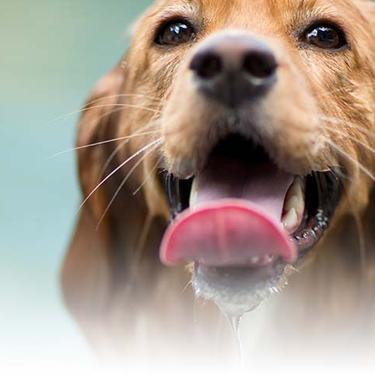 Water
WaterDiscover why water is the most important nutrient for your dog or cat to live a healthy life. Find out how much water your pet should consume each day.
Read More The Incredible Science Behind Your Pet's Microbiome
The Incredible Science Behind Your Pet's MicrobiomeLearn what a pet's microbiome is, how it contributes to your pet's gut & overall health, and why nutrition is important in maintaining healthy microbiomes.
Read More -
Find the right food for your pet
Find the right food for your pet


In humans, cataracts are the world's leading cause of blindness. Cataracts in cats are rare, but the disease is still serious; if left untreated, it may lead to blindness. Thankfully, many cases of feline cataracts can be successfully treated.
What Is a Cataract?
Cataracts affect the lens of the eye. The lens helps to focus vision as light that passes through the eye, allowing your cat to see. If this small structure becomes cloudy due to a cataract, it can no longer focus light resulting in blurry vision. The lens is made of mostly proteins and water. Clouding of the lens occurs due to changes in the proteins and lens fibers.
Cataracts in cats are less common than they are in humans and dogs. Furthermore, while humans and dogs can develop cataracts due to diabetes, cats with diabetes typically don't get cataracts. They are also most common among older cats, and Burmese and Himalayan cats are genetically predisposed to the condition. However, cats of all ages and breeds can be affected.
Causes of Cataracts in Cats
Cataracts in cats can develop due to:
- Poor nutrition in early life
- Genetics
- Trauma
- Metabolic disorders
- Radiation
- Inflammation (as with cat cancer, glaucoma, trauma, autoimmune diseases or infection)
- Lens dislocation (typically after trauma or inflammation)
- Cats may also develop cataracts that are related to other diseases such as diabetes or hypertension
Cataracts may develop as a result of uveitis, a type of eye inflammation that can occur as a result of infectious diseases like feline immunodeficiency virus, feline leukemia virus, feline infectious peritonitis and toxoplasmosis. However, it's not always possible to identify the cause of cataracts.
Signs & Symptoms of Cataracts in Cats
Cats are very good at hiding discomfort and vision changes, so it's crucial to look for potential signs of cataracts, such as:
- Hazy or cloudy appearance of one or both eyes
- Behavioral changes (hiding, reduced activity, bumping into familiar objects, difficulty finding their food bowl and/or litter box)
- Disorientation
- Tentative or cautious behavior in unfamiliar places or around stairs
While cataracts aren't considered painful, some conditions that cause them can be. Because of this, a cat with cataracts might also squint or have discharge, redness and swelling around the eye.
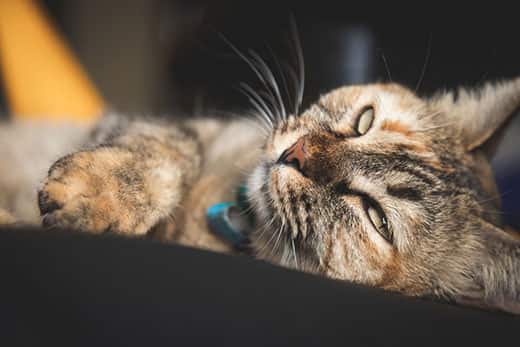
Diagnosis of Feline Cataracts
To diagnose cataracts, your veterinarian may perform a variety of tests such as the eye exam and pressure tests. While general practitioners can diagnose most cataracts, they may refer you to a specialist such as veterinary ophthalmologists, who can conduct more sophisticated tests.
These tests may include:
- Advanced eye imaging (including ultrasound)
- Eye pressure testing
- Blood tests for metabolic diseases and infections
If your vet either suspects or diagnoses cataracts in your cat, your veterinarian may recommend that you see a board certified Veterinary Ophthalmologist for further testing and treatment.
Types of Feline Cataracts
Cataracts are classified according to severity and percentage of the lens affected. These are the classifications, according to Animal Eye Clinic:
- Incipient cataracts: Affect less than 15% of the lens
- Immature cataracts: Affect 15% to 100% of the lens; light can still pass through
- Mature cataracts: Affect the entire lens; light passage is impeded
Diagnosing the stage of feline cataracts is essential to selecting the best treatment option.


Tasty Tips
Treating Feline Cataracts
Identifying and addressing the underlying cause of cataracts is the primary approach to treatment. Once this is determined, definitive measures to delay or prevent cataract-related blindness can be considered.
Here are some common approaches:
- Drugs: Steroids and nonsteroidal anti-inflammatory drugs can reduce eye inflammation.
- Surgery to remove the eye (enucleation): Depending on the underlying cause, removal of the eye may be advised, especially if the underlying cause of the cataract causes swelling and pain.
- Surgery to remove the cataract: Another common treatment is replacing the lens of the eye through cataract surgery, performed by a veterinary ophthalmologist.
Cat Cataract Surgery
Removing and replacing the lens with a prosthetic lens is strongly recommended for cats who qualify. If your cat receives cataract surgery, there are important steps you can take to help your cat recover.
For several months after surgery, you'll likely need to apply topical eye medicine. You must also keep your cat in a confined space for at least three weeks, as complications like swelling and bleeding may occur. A pet cone is a must, too.
The Role of Nutrition in Feline Cataracts
Feline cataracts can occur in kittens as a result of inadequate nutrition. A study of hand-reared tigers in Open Veterinary Journal seems to support this. Adequate intake of amino acids (the building blocks of protein) are important for eye development in tigers. Presumably, the same is true when it comes to reducing the risk of cataracts in domestic cats.
What's more, studies in humans, like one in Nutrition Reviews, suggest that the risk of cataracts might be reduced with appropriate nutrition, especially intake of antioxidant vitamins, like vitamin C, as well as lutein, B vitamins, omega-3 fatty acids. A properly balanced pet food for your cat's life stage can often provide the essential nutrients to support your cat's eye health.


Dr. Patty Khuly is an award-winning veterinarian known for her independent thinking, her spirited pet advocacy, her passion for the veterinary profession, and her famously irreverent pet health writing.
Dr. K is an honors graduate of both Wellesley College and the University of Pennsylvania School of Veterinary Medicine. She received her MBA at The Wharton School of Business as part of the prestigious VMD/MBA dual-degree program. She now owns Sunset Animal Clinic, a veterinary practice in Miami, Florida.
Related products

Over 70% of cats lost weight within 10 weeks when fed this nutrition

Science Diet's breakthrough nutrition supports ultimate digestive well-being & healthy microbiome

Feline Adult Perfect Weight Variety Pack

Precisely balanced nutrition with the delicious taste of savory minced chicken to help fuel the energy needs of cats during the prime of their life
Related articles
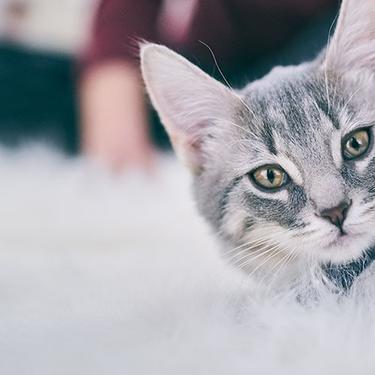
Discover the benefits of Hill's line of kitten foods and how they provide complete and balance nutrition for growing kittens.

Discover how to identify cat sensitive skin and what you can do to help your cat thrive from head to paw.
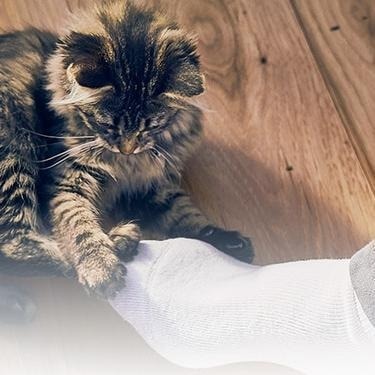
Discover which cat toys games your feline friend might like, and how they are great sources of exercise. Explore our library of articles to learn more.
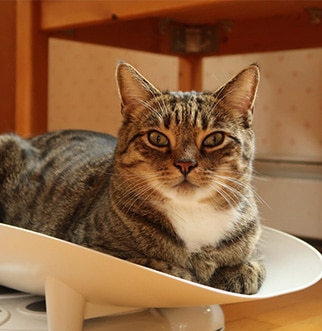
How do you get a cat to lose weight? Learn all about cat foods for weight loss, including how to choose weight control cat food and exercise tips.
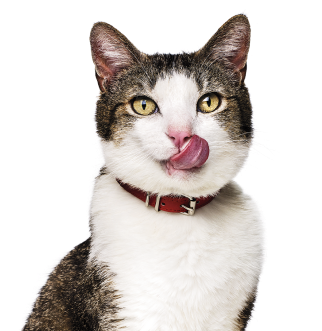
Put your cat on a diet without them knowing
Our low calorie formula helps you control your cat's weight. It's packed with high-quality protein for building lean muscles, and made with purposeful ingredients for a flavorful, nutritious meal. Clinically proven antioxidants, Vitamin C+E, help promote a healthy immune system.
Put your cat on a diet without them knowing
Our low calorie formula helps you control your cat's weight. It's packed with high-quality protein for building lean muscles, and made with purposeful ingredients for a flavorful, nutritious meal. Clinically proven antioxidants, Vitamin C+E, help promote a healthy immune system.

